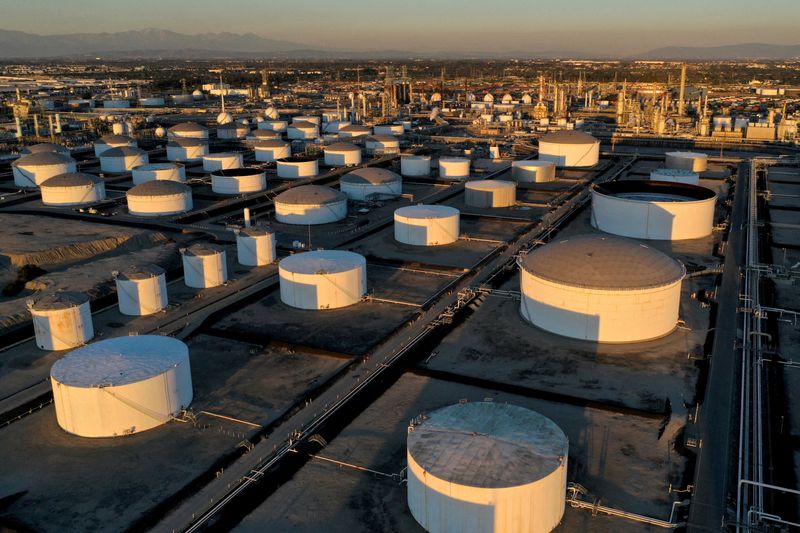
By Colleen Howe
BEIJING (Reuters) – Oil prices steadied in Asian trading on Wednesday, as traders weighed uncertainty surrounding developments in the Middle East conflict against continued bearish fundamentals.
Brent crude futures rose 11 cents, or 0.14%, to $77.29 a barrel by 0223 GMT. U.S. West Texas Intermediate futures rose 3 cents to $73.60 a barrel.
Prices had plunged more than 4% in the previous session on a possible Hezbollah-Israel ceasefire, but markets remain wary of a potential Israeli attack on Iran’s oil infrastructure.
“We anticipate additional volatility as the market weighs bearish fundamentals against supply risk due to rising Middle East tensions,” Macquarie analysts said in a note.
The sell-off in the Tuesday session followed a rally that began after Iran launched a missile barrage at Israel on Oct. 1, culminating in an 8% gain on the week on Friday, the largest in over a year.
Hezbollah officials on Tuesday appeared to back off from a truce in Gaza as a condition for a ceasefire in Lebanon. Hezbollah’s deputy leader Naim Qassem said he backed attempts to secure a truce in a televised speech, the first time the end of the war in Gaza was not mentioned as a pre-condition.
Giving a view on demand, data showed U.S. crude oil stocks rose by nearly 11 million barrels last week, much more than analysts polled by Reuters had expected, according to market sources citing American Petroleum Institute figures on Tuesday. However, fuel stockpiles fell.
Weak demand continued to underpin the fundamental outlook. The U.S. EIA on Tuesday downgraded its 2024 forecast for global oil demand growth by 20,000 barrels per day (bpd), to 103.1 million bpd, because of weaker industrial production and manufacturing growth in the U.S. and China.
Hurricane Milton, one of the most intense Atlantic hurricanes on record, is expected to make landfall on Florida’s Gulf Coast on Wednesday, potentially disrupting gasoline supply to the third-largest consuming state in the U.S.

“With some uncertainty over Hurricane Milton’s impact on oil infrastructure and traders still guessing as to what and when Israel’s response to Iran’s missile attack will come, I suspect we have entered a new higher trading range for now between $72.50 and $77.50,” said Tony Sycamore, market analyst with IG.
Florida, which depends on waterborne imports of the fuel, had closed most of its ports to vessel traffic on Tuesday, and energy companies shut down some pipelines and delivery terminals in Tampa.
This post is originally published on INVESTING.



